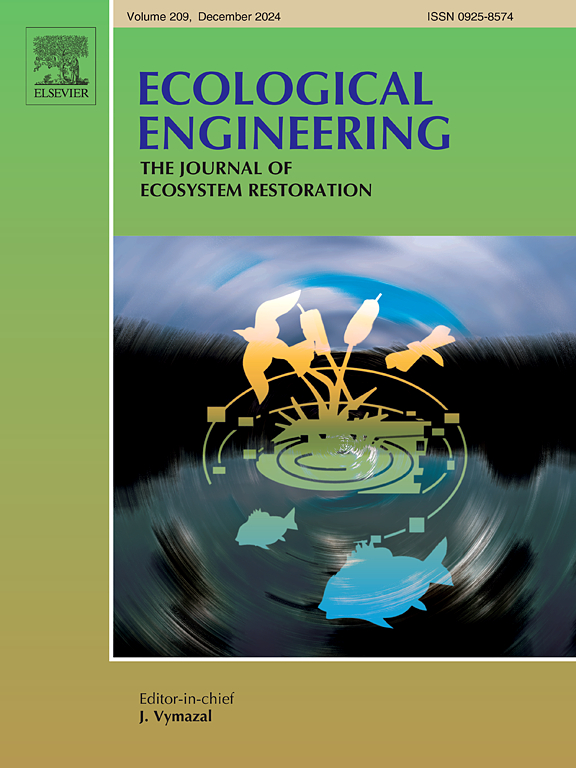城市森林不同生态管理措施对土壤细菌多样性的影响
IF 4.1
2区 环境科学与生态学
Q1 ECOLOGY
引用次数: 0
摘要
为了促进城市生态系统的可持续发展,了解土壤微生物多样性对不同生态管理措施的响应是必要的。然而,驱动城市生态系统土壤微生物多样性的主要因素在很大程度上仍不清楚。本研究对上海海湾森林公园土壤细菌多样性进行了研究,并评价了其对不同生态管理措施的响应。结果表明,不同的生态管理措施对土壤细菌多样性有显著影响,土壤理化性质(如pH和AP)是影响细菌多样性的关键因素。此外,土壤细菌多样性对管理措施的响应并不明显,需要进一步的研究来揭示潜在的模式。该研究为将微生物多样性纳入城市生态管理策略提供了实证支持,有助于制定更有效的土地利用规划和保护政策。本文章由计算机程序翻译,如有差异,请以英文原文为准。
Effects of different ecological management measures of urban forests on soil bacterial diversity
To enhance the sustainable development of urban ecosystems, understanding the responses of soil microbial diversity to different ecological management measures is essential. However, the primary factors driving soil microbial diversity in urban ecosystems remain largely unclear. In this study, we examined soil bacterial diversity in Shanghai Haiwan Forest Park and evaluated its responses to various ecological management measures. The results indicated that the different ecological management measures significantly affected soil bacterial diversity and that soil physicochemical properties (e.g., pH and AP) were crucial factors influencing bacterial diversity. In addition, the responses of soil bacterial diversity to management measures were not immediately apparent, and further research is needed to uncover potential patterns. This study provides empirical evidence supporting the integration of microbial diversity into urban ecological management strategies for the development of more effective land-use planning and conservation policies.
求助全文
通过发布文献求助,成功后即可免费获取论文全文。
去求助
来源期刊

Ecological Engineering
环境科学-工程:环境
CiteScore
8.00
自引率
5.30%
发文量
293
审稿时长
57 days
期刊介绍:
Ecological engineering has been defined as the design of ecosystems for the mutual benefit of humans and nature. The journal is meant for ecologists who, because of their research interests or occupation, are involved in designing, monitoring, or restoring ecosystems, and can serve as a bridge between ecologists and engineers.
Specific topics covered in the journal include: habitat reconstruction; ecotechnology; synthetic ecology; bioengineering; restoration ecology; ecology conservation; ecosystem rehabilitation; stream and river restoration; reclamation ecology; non-renewable resource conservation. Descriptions of specific applications of ecological engineering are acceptable only when situated within context of adding novelty to current research and emphasizing ecosystem restoration. We do not accept purely descriptive reports on ecosystem structures (such as vegetation surveys), purely physical assessment of materials that can be used for ecological restoration, small-model studies carried out in the laboratory or greenhouse with artificial (waste)water or crop studies, or case studies on conventional wastewater treatment and eutrophication that do not offer an ecosystem restoration approach within the paper.
 求助内容:
求助内容: 应助结果提醒方式:
应助结果提醒方式:


